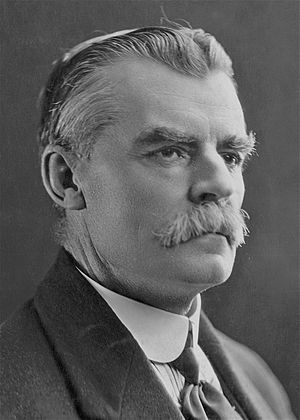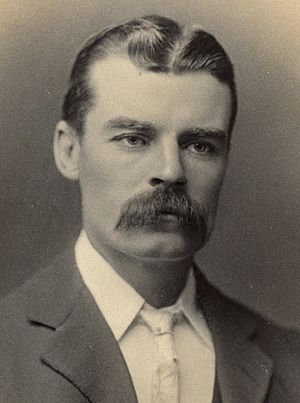Matthew Charlton facts for kids
Quick facts for kids
Matthew Charlton
|
|||||||||||||||||||
|---|---|---|---|---|---|---|---|---|---|---|---|---|---|---|---|---|---|---|---|
 |
|||||||||||||||||||
| 7th Leader of the Opposition | |||||||||||||||||||
| In office 25 January 1922 – 29 March 1928 |
|||||||||||||||||||
| Prime Minister | Billy Hughes Stanley Bruce |
||||||||||||||||||
| Deputy | Albert Gardiner James Scullin |
||||||||||||||||||
| Preceded by | Frank Tudor | ||||||||||||||||||
| Succeeded by | James Scullin | ||||||||||||||||||
| 5th Leader of the Labor Party Elections: 1922 |
|||||||||||||||||||
| In office 16 May 1922 – 29 March 1928 |
|||||||||||||||||||
| Deputy | Albert Gardiner James Scullin |
||||||||||||||||||
| Preceded by | Frank Tudor | ||||||||||||||||||
| Succeeded by | James Scullin | ||||||||||||||||||
| Leader of the Labor Party | |||||||||||||||||||
|
Acting
|
|||||||||||||||||||
| In office 5 January – 16 May 1922 |
|||||||||||||||||||
| Deputy | Albert Gardiner | ||||||||||||||||||
| Preceded by | Frank Tudor | ||||||||||||||||||
| Succeeded by | James Scullin | ||||||||||||||||||
| 6th Deputy Leader of the Labor Party | |||||||||||||||||||
| In office 30 September 1921 – 16 May 1922 |
|||||||||||||||||||
| Leader | Frank Tudor | ||||||||||||||||||
| Preceded by | T. J. Ryan | ||||||||||||||||||
| Succeeded by | Albert Gardiner | ||||||||||||||||||
|
|||||||||||||||||||
|
|||||||||||||||||||
| Personal details | |||||||||||||||||||
| Born |
Matthew Charlton
15 March 1866 Linton, Colony of Victoria |
||||||||||||||||||
| Died | 8 December 1948 (aged 82) Lambton, New South Wales, Australia |
||||||||||||||||||
| Resting place | Sandgate Cemetery, Sandgate | ||||||||||||||||||
| Political party | Labor | ||||||||||||||||||
| Spouse |
Martha Rollings
(m. 1889) |
||||||||||||||||||
| Education | Lambton Public School | ||||||||||||||||||
| Occupation |
|
||||||||||||||||||
Matthew Charlton (born March 15, 1866 – died December 8, 1948) was an important Australian politician. He led the Australian Labor Party (ALP) and served as the Leader of the Opposition from 1922 to 1928. During his time as leader, his party lost the federal elections in 1922 and 1925.
Charlton was born in Linton, Victoria, but moved to Lambton, New South Wales as a child. He started working in coal mines at a young age. He became a strong voice in the trade union movement, which helped workers. In 1903, he was elected to the New South Wales Legislative Assembly for the Labor Party. He then moved to federal politics in 1910.
Charlton was against conscription, which is forcing people to join the army. He stayed with the Labor Party after a big split in 1916. He became the party leader in 1922 after Frank Tudor passed away. He stepped down as leader in 1928 and was replaced by James Scullin. Charlton left politics later that same year.
Contents
Early Life and Work
Not much is known about Matthew Charlton's early life. He grew up in a mining area that was not very well-known. We do know that he was born on March 15, 1866, in Linton, Victoria. This was a small town near Ballarat. His parents were Matthew Charlton, a miner from England, and Mabel (née Foard).
In 1871, when Matthew was five years old, his family moved to Lambton, New South Wales. This is a suburb of Newcastle, New South Wales. After going to Lambton Public School, Charlton started working at the Lambton Colliery. His first job was as a coal trapper. This job was usually for children, and it involved opening trapdoors for coal carts.
When he got older, Charlton started working at the coal-face, digging coal. At 23, he married Martha Rollings in nearby New Lambton.
Getting Involved in Politics
In 1896, there were plans to lower the wages of coal workers. This led to a strike. Charlton supported the miners who were fighting against these wage cuts. However, the strike did not succeed. Because of this, Charlton and many other miners moved to the goldfields near Kalgoorlie, Western Australia.
After two years, Charlton returned to Lambton. He became an official in the Colliery Employees' Federation. In 1901, he became the treasurer of this group. While in this role, Charlton also helped prepare cases for workers' rights. He worked hard to improve conditions for mine workers.
In November 1902, he went to a meeting of trade unions. There, he suggested that the government should take control of the coal mining industry. He believed this would stop owners from competing too much, which hurt miners' wages. This idea was seen as too extreme. However, they agreed that state governments should open their own coal mines. They also agreed that full government control was a good long-term goal.
Starting a Political Career
Charlton's colleagues encouraged him to run for a seat in the state parliament. On December 5, 1903, Charlton became a member for the Waratah district. This was in the New South Wales Legislative Assembly. He did not represent this district for long. The next year, he moved to represent Northumberland. He took the place of John Norton.
Charlton became the main spokesperson for miners in parliament. He mostly spoke about mining issues. In 1909, a coal miners' strike happened in New South Wales. The Colliery Employees' Federation asked Charlton to represent them. He tried to get better conditions for the miners but was not successful. However, he did help end the dispute by talking to miners around the state and convincing them to go back to work.
He left state politics and in 1910, Charlton won the federal seat of Division of Hunter. He won it from Frank Liddell. Hunter has been a strong Labor Party seat ever since.
Early Years in Federal Politics
Matthew Charlton quickly gained the trust of Andrew Fisher, who was the Prime Minister. In 1913, Charlton was given a temporary leadership role in the House of Representatives. However, in 1915, he threatened to resign. This was because the government was slow to give his committee more power. Fisher managed to calm him down.
In 1916, Charlton showed his loyalty to the new Labor leader, Billy Hughes. He voted for Hughes' bill about conscription, even though he was strongly against forcing people into the army. Charlton fought hard against conscription. He seemed to accept the vote's outcome and defended Hughes when other party members criticized him. Charlton tried to move the attacks on Hughes to a party meeting. But Hughes left the party before a decision could be made.
The next Labor leader, Frank Tudor, was not very strong due to his health. The person expected to take over was T. J. Ryan. Ryan had resigned as premier of Queensland in 1919 to join federal politics. In August 1920, both Tudor and Ryan became ill. This happened while two important government bills were being discussed.
On August 12, a special meeting chose Charlton as the acting leader in the House of Representatives. The party's deputy leader was Senator Albert Gardiner. Ryan died on August 1, 1921, after being sick for a while. On September 29, the party chose Charlton as deputy leader to replace Ryan. Tudor died on January 10, 1922. This made Charlton the acting leader of the party. On January 25, the party chose him as the leader of the Labor Party in the House of Representatives. This also made him the Leader of the Opposition. The overall leadership of the party was empty until May 16. On that day, Charlton won a vote against Albert Gardiner. Gardiner was then chosen as his deputy.
Leading the Opposition
At the 1922 federal election, Charlton offered new ideas for Australia. He seemed like he might win. However, he became sick and had to go to the hospital halfway through the election campaign. Even so, the Labor Party won the most seats as a single party. But Charlton could not defeat the strong government coalition. So, Labor stayed in opposition.
Because many people were lost during World War I, Charlton was against military training. He also opposed Australia sending its forces to other countries. In 1924, Charlton was invited to a League of Nations (now United Nations) meeting in Geneva, Switzerland. At this meeting, Charlton strongly spoke out against war. The Geneva Protocol, a plan for peace, started to take shape there.
When he returned to Australia, Charlton wanted Australia to agree to the protocol. But the government sided with the British and refused to follow it.
Charlton lost the 1925 election. This was largely because of his views on worker relations. Also, there were many union strikes that hurt his campaign. Charlton always tried to keep good relationships within the Labor Party. He often helped solve problems within the New South Wales branch of the party. He resigned from his leadership roles on March 29, 1928. His replacement, James Scullin, later became the Prime Minister of Australia.
Later Life
After leaving federal politics, Matthew Charlton became interested in local government. He served as an alderman (a type of local council member) on the Lambton Council from 1934 to 1938. This was before Lambton merged with the City of Newcastle.
He passed away in Lambton, New South Wales, on December 8, 1948. This was the place where he grew up and lived most of his life. Charlton was buried in the general section of Sandgate Cemetery. Martha Charlton, his wife, died on June 8, 1955, and is buried with him. Their sons, Matthew and Percy, died before both of them.
The Division of Charlton in the Hunter Region was named in his honor. This area was a strong Labor Party seat from when it was created in 1984 until it was removed in 2016.
See also
 In Spanish: Matthew Charlton para niños
In Spanish: Matthew Charlton para niños



